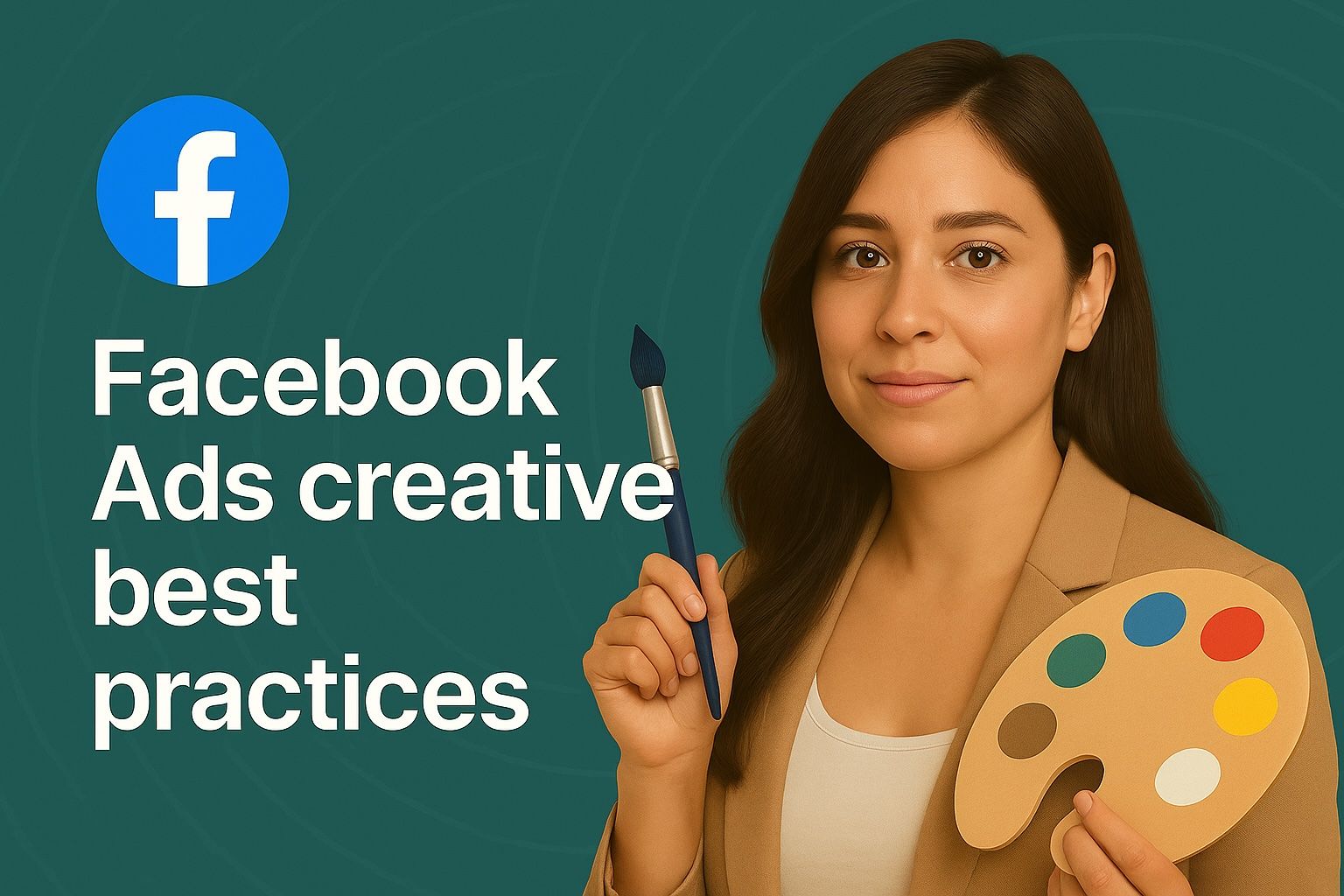How To Measure Ad Effectiveness for Better Campaigns

In a world where consumer behavior and market trends shift rapidly, measuring ad campaign effectiveness is critical, as it helps you pivot your advertising strategies quickly.
Deliver real ROI instead of creating more noise with innovative tools like Superads.
It’s critical to measure the effectiveness of your ads. Key metrics like click-through rates, engagement rates and conversions can help you refine messaging for better performance.
Highly targeted ads can increase CTR by over five times, which makes sense considering that 71% of consumers now prefer personalized ads.
But with endless analytics platforms clamoring for airtime, it’s hard to know which one to choose.
Learn below the importance of effectiveness metrics, how they optimize ad performance and how a tool like Superads saves time and money while preserving creative brainpower for the fun stuff.
Why Measuring Ad Effectiveness Matters for Campaign Success
Without advertising, your target customers may never discover your brand. Currently, the top sources of brand discovery are TV ads (30.6%) and social media ads (27.7%).
Currently, 5.07 billion people are on social media—this offers significant potential for reaching people aged 16 to 24m, while LinkedIn ads reach 12% of the world's population aged 18 and over.
Intelligent measurement of your ads isn’t just about numbers—it’s your ticket to making every marketing dollar work harder. Analyzing your marketing data helps you identify what works and doesn’t, helping you create more effective advertising campaigns.
With today’s consumers drowning in ads, many are building walls against marketing overload. Ads that don’t connect with your target audience authentically are simply ignored.
Analyzing ad data can help you refine your creative approach to connect better with potential customers. Traditional reporting methods can lack clarity, though. Using tools like spreadsheets extracted from social media platforms to derive insights is time-consuming and complex.
7 Metrics for Measuring Ad Effectiveness
The first step in measuring how effective your ads are is understanding the metrics you can access to optimize ad performance.
All marketers should get to grips with the following ad effectiveness metrics:
1. Click-through rate (CTR)
This metric indicates how engaging the target audience finds the ad. CTRs are essential for assessing creative appeal and audience alignment.
If the CTR is high on an ad, you know it resonates. This knowledge can help you refine your strategies for better overall campaign performance.
2. Engagement rate
The engagement rate measures audience interaction with your ads, calculated as engagements (e.g., likes, comments, shares, views) divided by total impressions. A high engagement rate means your audience is interested in the ad—an excellent sign.
Note, however, that engagement rates often fall under the “vanity metrics” category. They look good but might not bring you the $$ you’re chasing.
3. Conversion rate
This metric measures how effectively your ad drives actions like purchases or sign-ups. It’s calculated by dividing the conversions by total clicks and expressing it as a percentage.
For instance, 40 conversions from 200 clicks result in a 20% conversion rate. Tracking conversions helps you assess your ROI, understand customer behavior and fine-tune advertising campaigns to maximize impact.
4. Cost per acquisition (CPA)
This marketing metric measures the cost of obtaining one conversion, like a sale or sign-up. It’s calculated by dividing the total ad spend by the number of conversions.
For instance, if you spend $500 on ads for 50 conversions, your CPA is $10. This metric helps you evaluate campaign effectiveness and identify areas for improvement, ultimately helping you to spend your marketing budget wisely.
5. Cost per click
The CPC metric refers to the cost of each ad click, calculated by dividing total spend by clicks. For example, $200 spent with 500 clicks results in a CPC of $0.40.
Monitoring CPC helps you assess your campaign efficiency. Keeping an eye on this metric can help you refine your targeting and marketing strategy and ensure your spending aligns with your performance goals.
6. Cost per thousand impressions (CPM)
CPM helps you evaluate how efficiently an ad reaches a large audience. It's calculated by dividing total spend by impressions (in thousands).
For instance, $500 for 100,000 impressions equals a CPM of $5.
7. Return on ad spend (ROAS)
ROAS measures revenue generated for each dollar spent on advertising, calculated by dividing total revenue by total spend.
For example, a marketing campaign that generates $5,000 in sales from a $1,000 ad budget has a ROAS of 5:1, meaning $5 is earned for every $1 spent.
Tracking ROAS can help you identify top-performing advertising campaigns.
Advanced Insights for Effective Ad Measurement (Beyond Basic Metrics)
Basic reporting metrics can help you optimize your ad spend, but they don’t help you improve your messaging very effectively.
For example, if you are running ads with multiple themes (e.g., product first vs. testimonial vs. brand first) at the same time you can group those ads by theme and compare their performance to see which theme is resonating most with your audience.

If you’re set on creating winning ad campaigns, go a step further by exploring the following more advanced data insights:
Creative performance analysis
Analyzing the success of creative elements like colors, imagery and calls-to-action (CTAs) can help you dig deeper into what resonates with your audience. The right combination of elements can significantly boost engagement and conversions.
Understanding your top-performing copy categories, themes, CTAs and mediums gives your creative team and their stakeholders the guidance they need to create more winning ads and feed your next set of AB tests or campaigns.

Audience engagement and retention metrics
To measure how successful your ads are, look beyond surface metrics. Analytics like dwell time, interaction rates and engagement across ad types provide valuable insights into audience behavior.
Ad placement and channel performance
Different channels, like social media platforms and search engines, attract different audiences. By analyzing performance across various channels, you can effectively allocate budgets and tailor content to each one.
Enhanced return on investment (ROI) and revenue tracking
Tracking ROI and revenue metrics is vital for assessing creative performance. Metrics like ROAS and CPA can help you identify profitable strategies as they demonstrate the ads’ direct contribution to business growth.
Using Superads To Streamline Ad Effectiveness Measurement
When Superside launched our AI-powered Superads platform, we suspected creative leaders would relish its ROI-boosting capabilities and adopt it quickly.
We were right.
Here’s why it’s so successful:
State-of-the-art ad analysis for performance insights
Superads drill deeper into the creative elements that drive results, providing valuable creative performance data-backed insights.
You get multiple performance creative insights across LinkedIn, TikTok and Facebook to monitor campaign performance and optimize as you go.
This type of creative analysis helps you to make swift adjustments, keeping your ad strategy agile and responsive to audience behavior. Ultimately, you boost conversions and increase sales for successful ad campaigns.
AI-backed analysis for creative dimensions (beta)
Superads uses AI-powered algorithms and parameters to analyze and categorize key creative dimensions, quickly identifying attributes that drive success.
AI can automatically group ads based on their tone, theme or format for deeper insights about where you should be investing.
It can also make recommendations about how to improve your ad performance by quickly identifying areas where you should reduce spend or run tests.

While AI can’t replace the expertise that performance marketers bring to the table, it can help deliver better-optimized insights to marketers and creatives using creative reporting tools to understand their assets and produce even better ones.
AI can help you create or refine your reports by translating your plain language requests into actionable reports that give you instant insights.

This helps marketing and design teams focus on what resonates with their audiences and refine their creative performance strategies.
Customizable, visual reporting
With Superads, you can create highly visual, ready-to-share reports with a drag-and-drop builder and multiple filters. Visually engaging designs ensure complex data is clear and actionable.
Full transparency across teams
Superads promotes collaboration within companies and teams by clearly displaying performance data and aligning creative and marketing teams toward common goals.
How To Successfully Measure Ad Performance: A Step-By-Step Guide
Now that you know which metrics to measure and why, it’s time to get your hands dirty. Here’s how to measure your ads’ performance, step by step:
Step 1: Define your goals and key metrics
Set clear objectives. Before launching an ad campaign, clarify your objectives. Do they revolve around brand awareness, engagement or conversions? Clear goals make for successful campaigns.
Choose relevant metrics. Select relevant metrics or KPIs based on your objectives—increased CTR for brand awareness, CPA for cost efficiency or conversions for driving sales.
Step 2: Track ad performance across key channels
Connect analytics platforms. Linking your ads to tools like Google Analytics or Superads enables real-time tracking of impressions, clicks and conversions to pinpoint areas for improvement.
In most reporting tools you can only see the results from one of your ad platforms which means comparing how an ad performs on Facebook compared to LinkedIn requires a lot of manual work, pulling reports and exporting them into spreadsheets.

If you can connect all marketing channels into just one reporting tool, that’ll help you see the bigger picture in way less time and with way less cost.
Step 3: Analyze basic performance metrics
Review CTR and engagement levels. Your CTR indicates how well your ads capture attention and drive clicks. A low value may mean your messaging or creative needs improvement to be successful.
Calculate CPA and CPC. Calculate your CPA and CPC to assess your ad spending efficiency. A high CPA may reveal targeting or creative issues in need of adjustment. CPC provides intel on the financial impact of the interactions, helping you monitor spending and manage costs.
Monitor CPM for reach. CPM is worth measuring during brand awareness campaigns. It indicates how effectively your ads reach your target audience and can help you maximize your investment.
Step 4: Examine advanced creative insights with Superads
Drill deeper into your ad data to uncover which creative elements resonate with your target audience and use the information to fine-tune your advertising strategies.
In Superads, you can create reports that include data from multiple platforms to compare performance across your channels, so you can easily see things like your Cost-per-Click by platform.
Even better, you can look at all your ads running across platforms in a single report to know where to invest more or less.

Superads multi-channel insights. Superads streamlines multi-channel tracking by merging data from platforms like Meta, LinkedIn and TikTok into one interface. This simplifies performance comparison, helping companies identify top performers.
Identify top-performing creative attributes. Superads analyze key creative elements that resonate most with your audience.
Analyze engagement by ad type. Superads offers customizable, dynamic reports in bar, line and gallery views that enable you to identify which formats generate the most engagement in each campaign you have set. Every marketer’s dream.
Assess channel-specific effectiveness. The platform evaluates campaign performance across channels with shareable dashboards to improve team alignment. This also allows for more effective budget allocation and a more robust marketing strategy in which you only advertise on the right channels.
Step 5: Refine and optimize ad performance based on insights
Using the insights you’ve gathered, you can refine your advertising campaigns. Superads streamlines this process for better, more informed decisions.
Identify areas for improvement. The analytics platform uses AI-driven categorization to analyze key creative elements, allowing companies to focus on areas for improvement.
Test and iterate as much as you need. Superads lets you adjust live campaigns, helping you optimize assets with agility and capitalize on opportunities.
Monitor the impact of changes with automated reporting. The platform also offers automated reporting to help you quickly monitor the impact of data-driven creative changes on ad campaigns.
Top Benefits of Using Superads
Superads gives you the complete picture you need to make smarter advertising investments and prove the value of your marketing efforts.
Here’s a snapshot of the benefits:
Effectively measuring ad effectiveness helps you to succeed.
Why wait? Get started free with Superads now.
Measuring Ad Effectiveness FAQs
1. How often should I review ad performance metrics?
Reviewing ad performance metrics varies based on business size, campaign age and ad type.
Smaller businesses can check less frequently, while bigger brands should monitor their advertisements more often—perhaps three times a week.
New campaigns should run for 2–4 weeks to gather sufficient data before adjusting.
2. What’s the difference between CTR and conversion rate, and when should I prioritize which one?
CTR measures how well an ad captures attention, while the conversion rate shows how effectively it drives desired actions.
It depends on your specific goals, but a good rule of thumb is prioritizing CTR for creative appeal and conversions for overall campaign success.
3. What’s the advantage of AI-powered ad reporting?
An AI-powered system like Superads automates data analysis, saving time and reducing human error.
AI quickly identifies patterns that may be missed in manual analysis, pinpointing which advertisement or creative attributes resonate with your audience in real time.
You may also like these

Facebook ads that convert: 10 real examples (and what to steal)
You A/B tested. You tweaked the copy. The click-through rate (CTR) is solid and the cost-per-click (CPC) isn’t looking too bad. And yet… your Facebook ad conversions are still haunting you.On paper, your Facebook ad campaign looks great. Eye-catching visuals, punchy copy, solid engagement. However, it’s just not converting potential customers.We’ve all been there.The problem is that most Meta ad reporting tools won’t tell you why an ad flops or what to do when it does. That’s where Superads comes in. Our AI-powered creative insights platform is built for marketers who want answers, not just analytics.In this article, I’ll break down ten of my favorite Facebook ads that convert, and try to unpack what makes consumers click across industries.
10 reasons why Facebook ads aren’t performing (and how to fix it)
Your Facebook Ads campaign is live. You’re not seeing any errors. But your results?Zero.If your ads underdeliver, bad creative or poor targeting isn’t always to blame. Meta’s ad system is complex, and minor missteps in setup or structure can derail your campaign’s performance long before your target audience sees the first ad.3.43 billion daily active users across Meta means your audience is indeed out there. But to get your Facebook Ads to perform, you need to understand how Meta’s algorithm evaluates, ranks and delivers ad campaigns.This article is built entirely on platform logic (not theory or opinion) to help you diagnose and fix frustrating Facebook ad issues inside Ads Manager.
The 10 Facebook ads metrics every strategist should master
Ever stared at your Meta Ads metrics dashboard and thought, “Is this good or bad?” Join the club.The sheer number of metrics (over 350!) is enough to overwhelm anyone. Plus, ad benchmarks aren’t universal. What’s “good” or “bad” depends on your industry, campaign goal, Facebook ad format, target market and location.Many marketing teams focus on the wrong metrics and waste precious time and money in the process.To identify the metrics that matter for their businesses, smart teams use tools like Superads. Built on $2 billion in real ad spend, Superads now includes a free, live benchmarking tool that shows you exactly how your numbers stack up so you can optimize your ads and win.But before we unpack the details, let’s take a good look at the 10 Facebook ad metrics you should track and interpret like a strategist.



